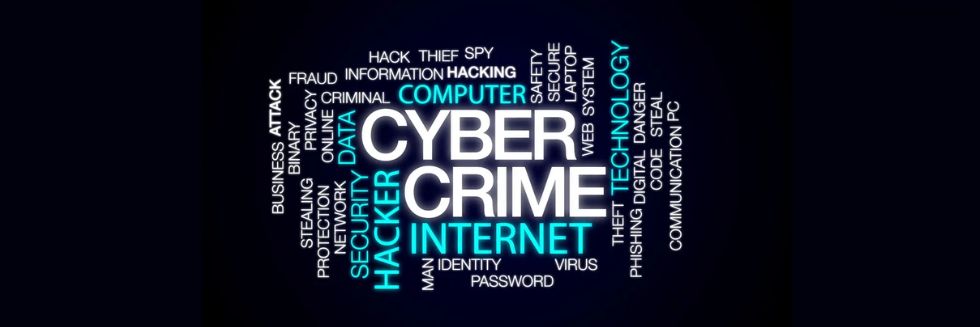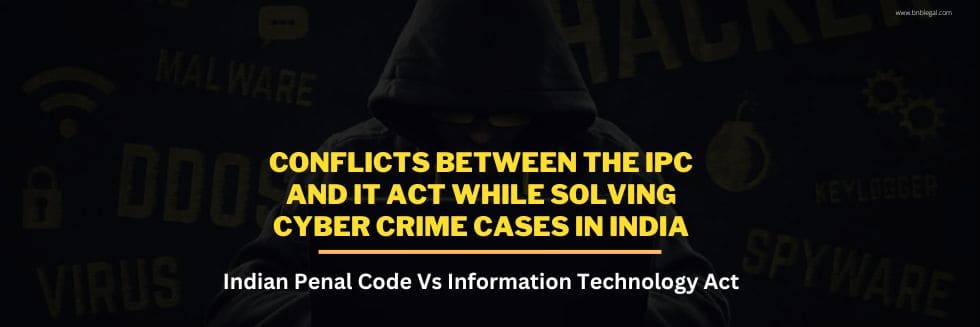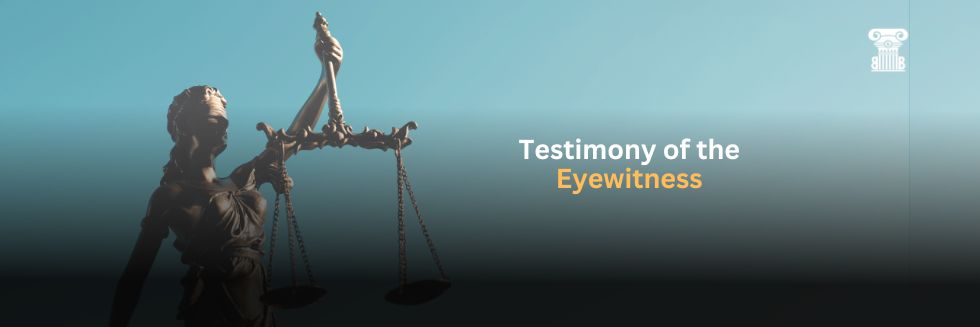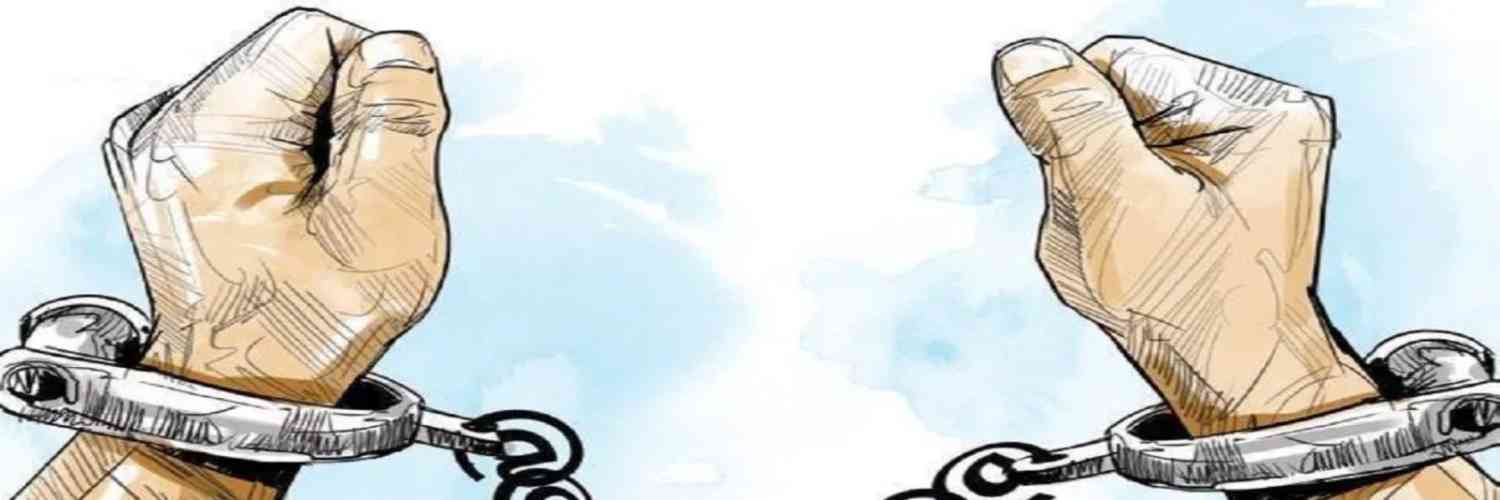Abstract
Nowadays, everybody is moving towards the span of digitization and networking, which beyond the shadow of a doubt, has an eclectic benefit in our day-to-day life. The span digitalisation is taking over the world in both good and bad ways. On the one hand, it is helping people in day-to-day life; on the other hand, it is also giving birth to a new criminal method known as cybercrime. India has experienced the most cybercrime in the world. A study was conducted for the period November to December 2021. India has the highest percentage of internet users who have experienced cybercrime at 76%. To prevent such crimes from happening, the Government needs laws and orders.
“Many cybersecurity laws depend mainly on each country’s territorial extent. The punishments for the same also vary according to the offence committed, ranging from fines to imprisonment.” IT ACT 2000, National Cyber Security Policy. Cyber Crime is not characterized in the Information Technology Act 2000, the National Cyber Security Policy 2013, or some other guidelines in India. Consequently, to characterize digital wrongdoing, one can say it is only a blend of wrongdoing and PC. As such, ‘any offence or wrongdoing wherein a PC is utilized is digital wrongdoing’. Indeed, even a minor offence like taking or picking a pocket can be brought inside the more extensive domain of cybercrime on the off chance that the essential information or help such an offence is a PC or data put away in a PC utilized (or abused) by the fraudster. The IT Act characterizes a PC, PC organization, information, data, and any remaining essential fixings that structure part of cybercrime.
INTRODUCTION
As per a general digital regulation definition, Cyber law is a comprehensive set of laws that deal with the web, PC frameworks, the internet, and all matters connected with the internet or data innovation. Internet regulation covers many subjects, including parts of agreement regulation, security regulations, and protected innovation regulations. It coordinates the electronic dissemination of programming, data, information security, and electronic trade. E-archives are given legitimate acknowledgment under digital regulation. Besides, the framework gives a design to electronic trade exchanges and electronic documenting of structures. To lay it out plainly, regulation arrangements with digital wrongdoings. As the web-based business has expanded in fame, it has become essential to guarantee there are appropriate guidelines set up to forestall acts of neglect.
The internet is the PC-created universe of the web, and the regulations that manage the internet or are presently active in this locale are known as digital regulations or IT regulations. These regulations have an overall locale, consequently, all clients of this internet depend upon them.
Many cybersecurity laws depend mainly on each country’s territorial extent. The punishments for the same also vary according to the offence committed, ranging from fines to imprisonment. IT ACT 2000, National Cyber Security Policy. Cyber Crime is not characterized in the Information Technology Act 2000, the National Cyber Security Policy 2013, or some other guidelines in India. “The modern thief is more likely to steal with a computer than with a sword. The terrorist of tomorrow may be able to do more harm with a keyboard than with a bomb.”
Cyber fraud is a subspecies of cybercrime which also requires an internet with the intent of giving false information to get money or property by tricking his victim. Cyber fraud includes an extensive range of crimes committed on the internet. That is different from theft, as in this case, the victim is subterfuge by the perpetrator to give information about money or property. Hacking, phishing, and identity theft are the most common cyber frauds resulting in the victim’s loss of information or financial assets. In the last few years, the individual or organization has to be equally aware of both insiders and outsiders for fraud.
Cyberspace is used for various illegal activities, which result in the compromise of the privacy of the individual. Here comes the role of cyber law in cyber securities in India. This article aims at educating you about
- What constitutes a Cyber-Crime?
- What is the importance of Cyberlaw?
- What are the various categories of Cybercrimes?
Different Categories Of Cyber Crime
1. Cybercrime Against Persons
“Cyberstalking”
Cyberstalking is wrongdoing where somebody bugs or stalks a casualty utilizing electronic or computerized implies, like virtual entertainment, email, texting (IM), or messages presented during a conversation gathering or discussion.
“Impersonation”
Whoever mimics or endeavors to imitate someone else, whether in any condition, genuine or fanciful, by giving any bogus segment data or biometric data.
“Loss of privacy”
Privacy is not just about hiding things; it is fundamentally about controlling who the world thinks they are. Loss of privacy can result in very actual harm to individuals, ranging from embarrassment to identity theft.
“Transmission of obscene material”
Transmission and publication of obscene content in electronic form.
“Harassment with the use of computer”
Cyber Harassment is defined as repeated, unsolicited, hostile behaviour by a person through cyberspace with the intent to terrify, intimidate, humiliate, threaten, harass or stalk someone.
2. Cybercrime Against Property
“Unauthorized computer trespassing”
Computer trespass is characterized as getting to a computer without legitimate authorization and acquiring monetary data from an office or organization from any safeguarded computer. Each state has its regulations in regards to computer intruding, however, they all reverberate the government Act in some way.
“Computer vandalism”
Vandalism in digital crime is called cybervandalism, and its goal, like real-world vandalism, is to be destructive. Investigate the crime of cybervandalism, and learn about the different types of cybervandalism and their characteristics.
“Transmission of harmful programmes”
They are conveyed as email connections, malevolent code on suspect sites or through removable media like blaze drives. Cybercriminals carry out these infections for a scope of purposes.
“Siphoning of funds from financial institutions”
Siphoning money by making phone calls is a technique that is commonly used by cybercriminals. The unsuspecting users often mistake revealing sensitive banking information over the phone as the cybercriminal poses himself as a bank official.
“Stealing secret information & data.”
Data theft – otherwise called information theft – is the unlawful exchange or capacity of individual, private, or monetary information. This could incorporate passwords, programming code or calculations, and restrictive cycles or advances.
“Copyright”
Copyright infringement in cyberspace is a type of Intellectual Property Theft, which can prompt huge security issues and lawful punishments. On the off chance that an individual endeavours to utilize or convey someone else’s work, who has “exclusive rights” over it, without authorization, he might be viewed as at fault for copyright infringement.
3. Cybercrime Against Government
“Hacking of Government websites”
Wrongdoing against the Government is otherwise called cyber terrorism. Government cybercrime incorporates hacking government websites, military websites or circulating publicity. These crooks are typically fear-based oppressors or hostile governments of different countries.
“Cyber Extortion”
Cyber extortion is a term for a wide exhibit of cybercrimes. Cyber extortion happens when cybercriminals take steps to debilitate the tasks of an objective business or undermine its secret data except if they get an installment.
“Cyber Terrorism”
Cyber terrorism utilizes the web to lead vicious demonstrations that outcome in or compromise the death toll or huge real damage to accomplish political or philosophical additions through danger or terrorizing.
“Computer Viruses”
Computer viruses are often used by criminals to help commit cybercrimes. They are delivered as email attachments, malicious code on suspect websites or through removable media such as flash drives. Cybercriminals implement these viruses for a range of purposes. Some other types of cyber crimes under this category include logic bombs, spamming, viruses, worms, trojan horses, email bombing, email abuse, etc.
Importance And Need For Strict Cyber Laws In India
Nowadays, everybody is moving towards the span of digitization and networking, which beyond the shadow of a doubt, has an eclectic benefit in our day-to-day life. Digitalisation is taking over the world in both good and bad ways. On the one hand, it is helping people in day-to-day life, and on the other hand, it is also giving birth to a new criminal method known as cybercrime. India has experienced the most cybercrime in the world. A study was conducted for the period November to December 2021. India has the highest percentage of internet users who have experienced cybercrime at 76%, and to prevent such crimes from happening, we need cyber law.
Nearly everybody is impacted by digital regulation in the present exceptionally digitalized world.
For instance:
- Practically, all exchanges in shares are in a demand structure.
- Practically all organizations rely on their PC and keep their critical information in an electronic structure.
- Government structures, including personal expense forms, and organization regulation structures, are currently filled in electronic structure.
- Buyers are progressively utilising credit/charge cards for shopping.
- Many people are utilising email, telephones and SMS messages for correspondence.
- Indeed, even in “non-digital wrongdoing” cases, the significant proof is tracked down in PCs/phones, e.g., in instances of homicide, separation, seizing, tax avoidance, coordinated wrongdoing, militant psychological activities, and fake money.
- Cybercrime cases include web-based financial cheats, online offer exchanging misrepresentation, source code robbery, Visa extortion, tax avoidance, infection assaults, digital damage, phishing assaults, email capturing, disavowal of administration, hacking, and porn are becoming standard.
- Computerized marks and e-contracts are quick supplanting customary techniques for executing business. In today’s highly digitalized world, almost everyone is affected by cyber law.
Cyber Laws in India
“In India, cyber laws are contained in the Information Technology Act, 2000 (“IT Act”), which came into force on October 17, 2000.” The Act’s primary purpose is to provide legal recognition to electronic commerce and facilitate filing electronic records with the Government.
The currency laws of India, even with the most understanding and broad-minded interpenetration, could not be interpreted in the light of upcoming cyberspace to get all things relating to various activities in cyberspace. The functional experience and the insight of judgment found that it will not be without huge dangers and entanglements assuming the current regulations were to be deciphered in the situation of arising cyberspace without ordering new cyber regulations. Thus, the requirement for authorization of significant cyber regulations.
None of the current regulations gave legitimate legitimacy or approval to the exercises in cyberspace. For instance, the internet is involved by a more significant part of clients for email. However, email is still not “lawful” in our country. There is no regulation in the country, which gives legal legitimacy, and approval to email. Courts and legal executives in our nation have been hesitant to allow legal acknowledgment of the legitimacy of email without any particular regulation being ordered by the Parliament and as required for Cyber regulation.
Cyber Crime Cases In India
THE BANK NSP CASE
In this case, trainees of bank management were engaged in marriage. “The pair had been using the company’s computers to exchange several letters. They had broken up their marriage after some time, and the lady made a fake mail id like “Indian bar associations”, and mail was sent to the foreign customers.” She used the bank computer to send these emails. These result in the loss of large consumers. The bank was held liable for these emails.
AVNISH BAJAJ V. STATE (N.C.T.) OF DELHI
“The Chief executive officer of Bazee.com was arrested due to the offensive content uploaded on their website. The CD was also sold in the market.” Mumbai and Delhi police took action and arrested the CEO, but they were released on bail. This raises debate on whether the burden and responsibility rest on the Internet service provider or the content provider.
ANDHRA PRADESH TAX CASE
“The plastics firm’s owner in Andhra Pradesh was arrested, and the Vigilance Department seized 22 crore rupees in cash from his home.” Thus, to show the validity of trade, the defendant provided 6000 vouchers which were scrutinised with the documents and computer, but after scrutiny, it was found out that the defendant was running five different companies and made those 6000 vouchers after the raid was conducted. So the State businessman’s questionable tactics were revealed when department officials used the computers of the accused.
BOYS’ LOCKER ROOM CASE
“The incident in the ‘boys’ locker room’ is a living example of cybercrime. In a society where we still talk about consent, these 15-year-olds have risen to another issue. Further, sharing images of underage girls without their knowledge. They also posed rape threats and slut-shamed them.
The Delhi Police registered a case under the IT Act and IPC provisions. The sharing of images of underage girls was a violation of the POCSO Act, 2012. The information on the ‘Boys Locker Room’ group had become public knowledge. So, the cyber cell decided to investigate. It arrested the admin of the Instagram chat group. The devices of identified members were seized and sent for forensic analysis.
The screenshots also included a Snapchat conversation between 2 boys. One of them suggested raping a girl. Later, a girl was posing as a boy to test her character. However, she was left with a warning.”
BAZEE.COM CASE
“The CEO of Bazee.com was arrested in December 2004 because a CD with objectionable material was being sold on the website. The CD was also being sold in the markets in Delhi.
The Mumbai Police and the Delhi Police got into action. The CEO was later released on bail.” This raised the question of what kind of distinction we draw between Internet Service Provider and Content Provider. The burden rests on the accused being the Service Provider, not the Content Provider. It also raises many issues regarding how the police should handle cybercrime cases.
Causes Of Cyber Fraud In India
There are four main causes which lead to the commission of cybercrime.
- Passion of youngsters: Cybercrimes can be committed for the sake of recognition. This is committed by youngsters who want to be noticed and feel demanding among the group of the big and tough guys in society. They do not mean to hurt anyone in particular; they fall into the category of Idealists who want to be in the spotlight.
- Desire to make quick money: Another cause of cyber-crime is to make quick money. This group is greed motivated and is a career criminal who tampers with data on the net or system, especially e-commerce and e-banking data information, with the sole aim of committing fraud and swindling money off unsuspecting customers.
- Misconception of fighting a Just cause: Thirdly, cyber-crime can be committed to fighting a cause one believes in, to cause threat and most often damages that affect the recipients adversely. This is the most dangerous of all the causes of cyber-crime. Those involved believe they are fighting a just cause and do not mind who or what they destroy in their quest to achieve their goals. These are the cyber-terrorists.
- Capacity to store data in comparatively small space: The computer has the unique characteristic of storing data in minimal space. This affords removing or to derive information through physical or virtual medium makes it much more manageable.
- Confidential Information is online: Confidential data from security firms, scientific databases, financial institutes and even governmental organizations is stored online and on networks. This allows cybercriminals to initiate unauthorized access and use it for their own needs. Complex technology can be manipulated, and firewalls can be bypassed, allowing criminals to access security codes, bank accounts and other information.
Conclusion
In my opinion, cyber law plays a crucial role in cybercrime. It is trying to protect citizens from cybercrime through laws and public awareness.
However, a wrongdoing free society is great and exists just in deception, it ought to be a consistent endeavor of rules to keep the guilts least. Particularly in a general public that is reliant increasingly more on innovation, wrongdoing in light of electronic regulation breaking will undoubtedly increment, and legislators need to exceed all expectations contrasted with the frauds to keep them under control.
Innovation is generally a two-sided deal and can be utilized for two purposes – great and malevolence. Steganography, Trojan Horse, Scavenging (and even Dos or DDoS) are innovations and, essentially, not violations, but rather falling into some unacceptable hands with a perniciousness goal who are on a mission to take advantage of them or abuse them, they come into the variety of digital wrongdoing and become culpable offenses.
Subsequently, rulers and administrators ought to be industrious to guarantee that innovation flourishes and is utilized for legitimate and moral business development, not for perpetrating wrongdoings. It ought to be the obligation of the three partners:
(i) The rulers, controllers, officials and specialists,
(ii) Internet or Network Service Suppliers or banks and different go-betweens and
(iii) The clients to deal with data security, assuming their separate parts inside the allowed restrictions and guaranteeing dutifulness to the land’s regulation.
This article is written and submitted by Mohd Shaaz Peerbaksh during his course of internship at B&B Associates LLP. Mohd Shaaz is a 5th year law student from IMS Unison University, Dehradun.








